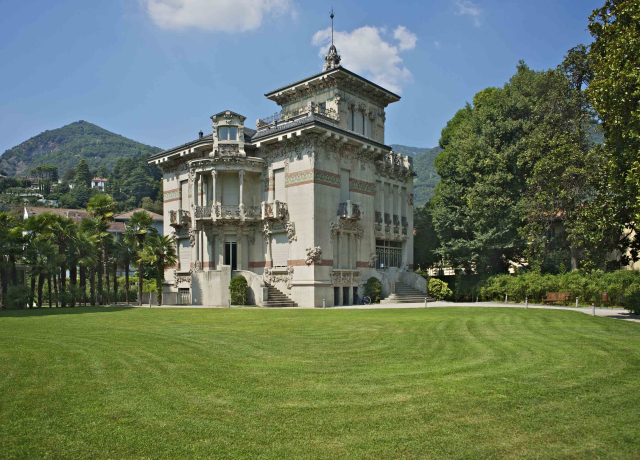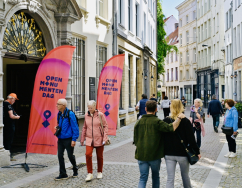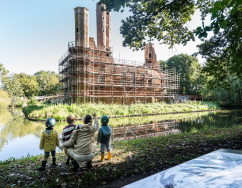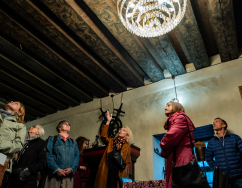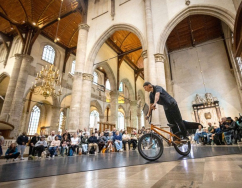European Heritage Days Article:
5 Ways to Approach This Year’s Heritage and Architecture Theme
European Heritage Days Article:
5 Ways to Approach This Year’s Heritage and Architecture Theme
Photo: Villa Bernasconi, 'The Talking House', EHD Story, Italy 2020 (credit, Villa Bernasconi Museum)
From exploring ancient ruins to contemporary designs, holding photography competitions and poetry performances or even building homes for wildlife, the Architectural Heritage theme offers a huge scope for creative and interactive interpretations. To help organisers get started with planning, this article looks at just some of the different approaches which can be considered to put together a varied programme of events inspired by this year’s theme.
Think past, present and future
Historic buildings always feature prominently in European Heritage Days events, and this is the perfect theme to highlight different architectural styles such as Romanesque, Gothic and Baroque. Ruins too can be included, to explore the passage of time and to consider the factors which allow buildings to survive or lead them to decay across the centuries. Archaeological dig open days could also be used for visitors to join archaeologists at excavation sites to learn more about the history of the buildings they are helping to uncover.
As suggested by the full name for this year’s theme, ‘Heritage and Architecture: Windows to the Past, Doors to the Future’, this theme is not just about historical places, but also the future of architecture too. An interesting angle is to consider which contemporary buildings might be considered architectural heritage by future generations. Ideas could include behind-the-scenes tours of a modern building to learn more about the architectural design process, or a walking tour through a town looking at a variety of contemporary buildings. Events might compare new buildings with their traditional counterparts and explore how architectural styles change over time as in this European Heritage Days Story from Norway which highlights changing planning approaches for residential buildings across the 20th century. Organisers might also work with local universities to connect with architecture students for an exhibition showing how heritage buildings provide inspiration for their studies and future careers.
Get the public involved
One aspect of this year’s theme is about exploring the significance of architectural heritage to local communities and recognising that buildings can hold personal meanings as well as collective memories. Asking the public for their views about architecture is one way to do this such as through community-led walks around towns and villages or an online vote to find the most liked and disliked buildings, with the reasons why forming the basis for discussion at other events. Activities might also particularly focus on considering the value of buildings to migrant and diasporic communities and the meanings they hold for them. Another idea is a competition to generate innovative suggestions from school, college and university students about repurposing derelict or abandoned historic buildings, perhaps in collaboration with a local architectural firm.
Creative and interactive events are always popular, and to fit this theme a community mural project could be used to celebrate the iconic buildings or local architectural styles of an area. Workshops for participants to learn practical skills for maintaining and preserving historic buildings could be an option for adults, while children’s workshops could involve creating models of their favourite buildings which could perhaps be displayed in a public exhibition.
Bring buildings to life
As this year’s theme focuses on buildings and monuments, it’s an opportunity for visitors to discover the stories they hold. For example, events could be hosted at buildings where historical figures or celebrities have lived, or perhaps where important or infamous events have taken place. A storytelling approach could be used for local residents to share their personal stories about buildings or neighbourhoods, as can be seen in the Your Tenement Memories project, a European Heritage Days Story from Ireland detailing an oral history project to collect memories, histories and experiences from people who have lived in this type of residence. Inspiration could also come from the Talking House Story in which the Villa Bernasconi in Italy is the main character of its own story. Through a multi-sensory approach to self-narration, visitors are treated as house guests who can explore the Art Nouveau property through interactive experiences accompanied by the ‘voice of the villa’.
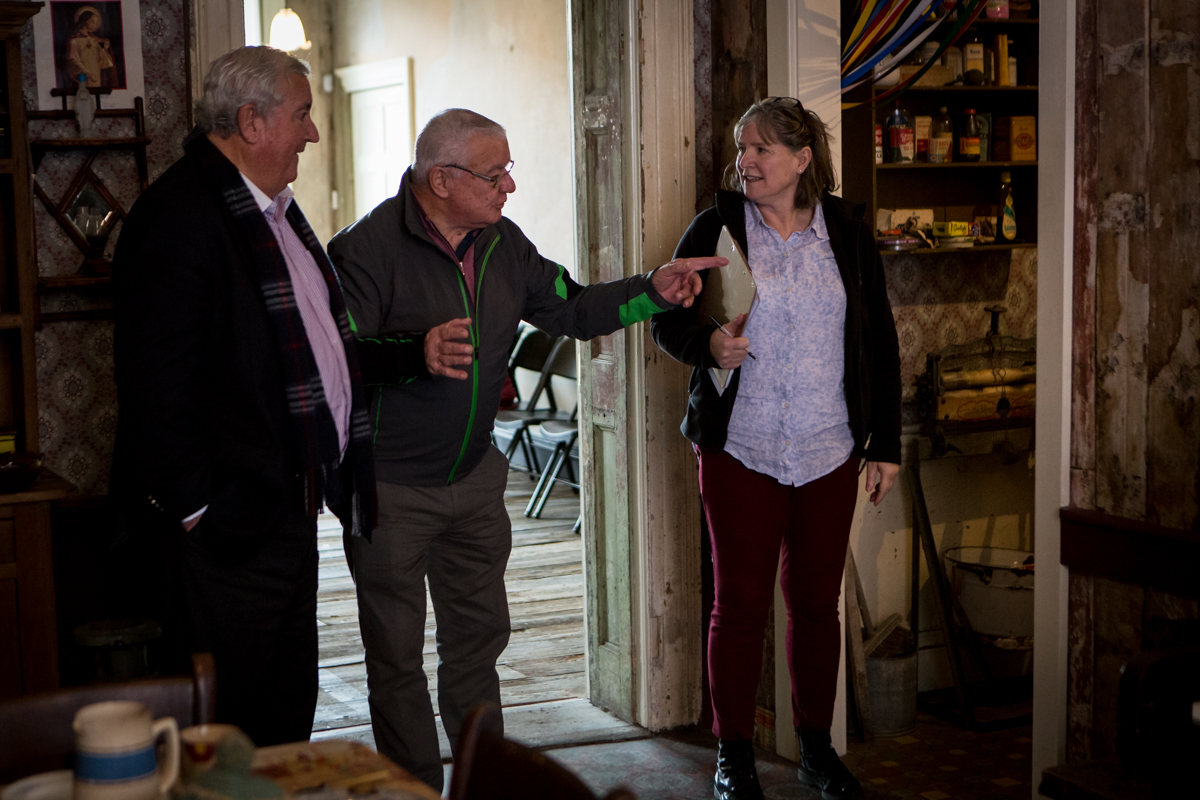
Another way to bring buildings to life with a creative and emotional perspective could be to hold an architectural poetry slam where participants can perform poems they have written inspired by local architecture. And to get artists involved, an art exhibition could invite creators to produce artwork showcasing the built environment of their town or city.
Connect with the experts
From the conservation of historic buildings to the design of architectural heritage of the future, this theme encourages appreciation for the skills and expertise of craftspeople and architects. To help them share their work with the wider community, public talks could be held with a panel of architects to discuss how they work and what inspires them, or events could be hosted by local architectural practices on-site at conservation projects. A focus on restoration could also involve developing connections with craftspeople such as those who specialise in stone carving, metalwork, making stained glass or using traditional materials, and a heritage craft market could be an opportunity for the public to buy their products and see demonstrations of their skills.
Don’t forget, this year’s theme coincides with the 50th anniversary of the European Charter of Architectural Heritage and the 40th anniversary of the Council of Europe Convention for the Protection of Architectural Heritage. Another approach for events could use these as the basis for hosting an architectural festival. This might include seminars where architects, town planners and academics could meet with communities to reflect on the success of these policies and discuss the challenges facing architectural heritage and ideas for its future protection.
Consider the outside and nature too
As well as the buildings themselves, this year’s theme could involve events looking at how they are framed and viewed from open spaces such as gardens and parks. This approach could look at how architecture is used to connect buildings to outside spaces, highlighting outdoor features such as courtyards, balconies and rooftop gardens. The history and architectural designs of horticultural or agricultural buildings such as orangeries or barns might be a particular topic to explore. Another avenue might be to think about the use of materials such as stone and marble with geology tours, while woodland areas could be used as a location for workshops on building dens for children to learn about construction techniques and use of natural materials.
Considering the plants and animals which share our buildings could also provide ideas, such as a trail for children to encourage them to be nature detectives. The theme could additionally look at the architecture animals use themselves, such as a talk by wildlife specialists to learn about constructions such as beaver dams, bee nests, rabbit warrens and spider webs, while other events could show participants how to build wildlife homes such as birdhouses or insect hotels.
For more help and ideas, take a look at the brochure for European Heritage Days organisers, featuring more information about the background of the theme as well as a range of other suggested events and entry points .
